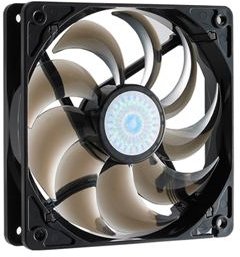Top 5 CPU Fan speed monitors
CPU Fan speed: Why is it important?
Checking your CPU fan speed is important. Even more important is checking the temperature of your CPU. The two go hand in hand. If your CPU fan is manually controlled you can use a fan speed monitor to balance cooling, fan speed, and noise. This article will introduce you to 5 utilities that can detect and display both fan speed and CPU temperature.
5 Programs compared
To make the comparisons fair, I only have two main requirements: That the program show the CPU Fan speed and show the temperature of the CPU. There are 4 programs and one alternative method that we’ll review.
SpeedFan (https://almico.com/speedfan.php)
SpeedFan has been the industry standard for monitoring and controlling CPU fan speed. It also measures CPU temperature and an assortment of other statistics. Its support for various computers is very good. It can also check hard drive health on supported hard drives and help you see what kind of memory is installed in a computer. It shows voltages and other various information. It is not particularly user friendly but it is accurate and detailed.
Argus Monitor (https://www.argusmonitor.com)
This monitor did not fare well in this comparison. It did not detect CPU temperature or fan speed on my computer. It did detect the hard drive temperatures and the temperature of my video card. For my purposes this program was quite useless. The last nail in the coffin is that it requires registration and is free for only 30 days.
PC Wizard 2010 (https://www.cpuid.com)
PC Wizard 2010 was surprisingly thorough. It detected the CPU temperature and CPU fan speed. It also displayed voltages and installed devices. Additionally, it was very easy to use. It is a very good tool in my opinion, and is worth the download.
Hardware Monitor (https://www.cpuid.com)
Like its bigger cousin PC Wizard 2010, Hardware Monitor is very good in what it does. It is very basic, and for the purpose of this comparison that is a plus. The only problem is that it does not show temperatures or CPU fan speeds properly. This may work better on your own computer but mine was not supported.
System BIOS
Now here’s one that will definitely support your computer. The only problem is that you have to reboot your computer to see it. Most system BIOS will show you CPU temperature and CPU fan speed. Check with your manufacturer to see how to access the BIOS on your PC. Most can be entered by pressing DEL or F2 2-3 seconds after you power up the computer.
In Conclusion: Which is best?
While it is very difficult to say which of these utilities is best, I have had the best experience overall with SpeedFan. It supports most systems and is always accurate. Again, its not as easy to use but it isn’t insanely difficult to decipher either.
You can also check with your motherboards’ manufacturer. Very often they will have a utility custom made for your motherboard that will show all of the vitals of your computer.
